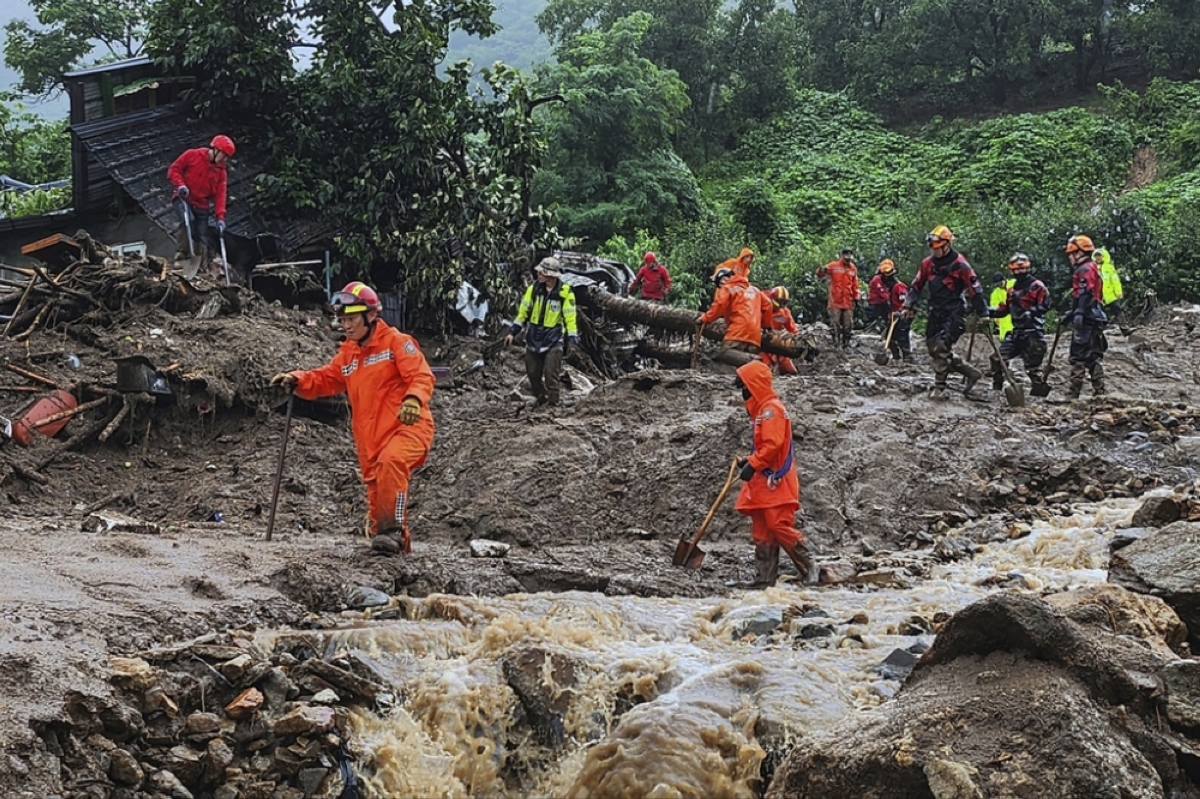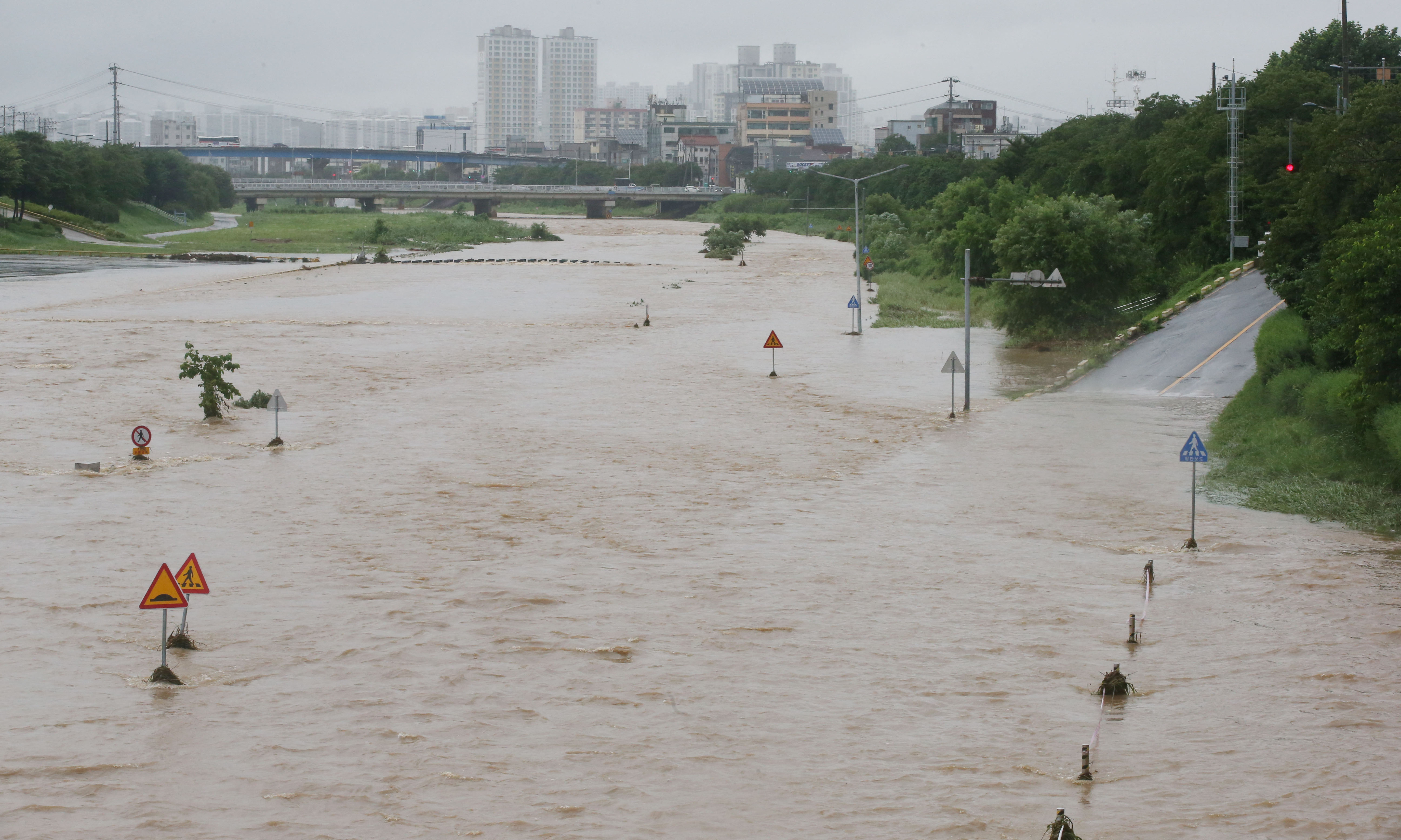News
22 Dead, 14 Missing Amid Deadly Floods in South Korea

Officials in South Korea announced on Saturday that at least 22 people had perished and 14 were missing as a result of severe rain and floods. Hundreds more were homeless after three days of heavy rains caused floods and landslides.
According to Reuters, the death toll may grow in the coming days.
after of Saturday morning, the country’s Ministry of Interior and Safety said that 1,567 individuals had been evacuated from their houses nationwide, a total that is expected to rise after water poured from the Goesan Dam in North Chungcheong province.
More than 2,700 tonnes of water were streaming into the dam per second as of 9 a.m. local time, which is the maximum unit it can discharge. Over 6,400 individuals in the central county of Goesan were asked to leave their houses, according to the minister, as the Goesan Dam began to overflow, burying numerous low-lying settlements in the region.
According to the ministry, many of those slain were killed in rain-related landslides and a collapsed building.
South Korean Prime Minister Han Duck-soo urged officials to respond “preemptively” to the disaster and asked the Defence Ministry to assist with rescue efforts.
According to the Korea Railroad Corporation, all train services in the country were ceased as of 2 p.m., with the exception of the KTX bullet trains, which may run on a delayed timetable. According to the Transport Ministry, a train derailed late Friday after being impacted by a landslip in North Chungcheong province.
South Korea is currently one of several countries dealing with floods and landslides caused by heavy rains.
South Korea’s monsoon season normally lasts from late June to early August, though the exact timing varies from year to year. During this time, the country sees an increase in rainfall and occasional torrential downpours.
The East Asian Monsoon, which delivers warm, moist air from the Pacific Ocean, has the greatest influence on monsoon precipitation in South Korea. As this moist air interacts with the geography of the Korean Peninsula, it can cause the production of convective clouds and thunderstorms, resulting in extensive rainfall.
These monsoon rains can be fairly heavy, increasing the likelihood of flooding, landslides, and other water-related hazards. During the monsoon season, the Korean Meteorological Administration (KMA) regularly monitors the weather and publishes alerts and warnings to help alleviate the potential effects.
Due to the country’s geography and frequent rainfall, monsoon rains in South Korea can often result in floods. The combination of persistent and severe precipitation, typically accompanied by thunderstorms, can overwhelm drainage systems, causing rivers and streams to overflow.
Monsoon rains can create considerable flooding, affecting infrastructure, agriculture, transportation, and people’s livelihoods. It can cause property damage, relocation of residents, service disruption, and even death. Flood-prone places in South Korea are mainly low-lying terrain, river basins, and metropolitan areas with poor drainage systems.
The South Korean government has implemented a number of measures to address the dangers connected with monsoon-related flooding. Construction of flood control infrastructure such as dams, reservoirs, and levees, as well as enhanced forecasts and early warning systems, are among these. The Korea Meteorological Administration (KMA) is critical in monitoring weather patterns and sending alerts to assist communities in preparing for potential flooding.
Local governments and emergency management organisations work together to evacuate impacted residents, provide temporary shelter, and perform rescue and relief activities in the aftermath of floods. Furthermore, during the monsoon season, community awareness initiatives and education programmes attempt to promote preparedness and safety measures.
Individuals who live in or visit flood-prone areas in South Korea should be informed about weather conditions, follow evacuation orders or advisories issued by local authorities, and take the appropriate actions to preserve their safety and well-being.
































